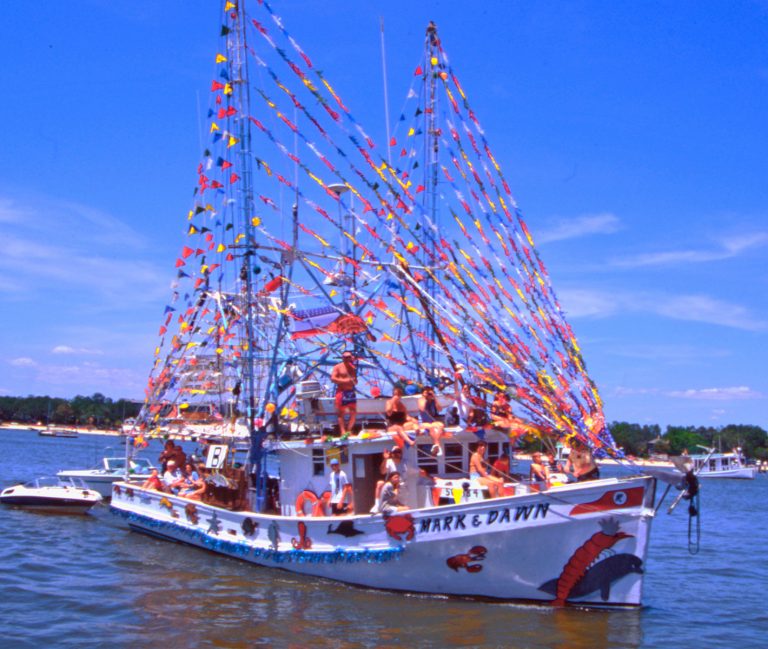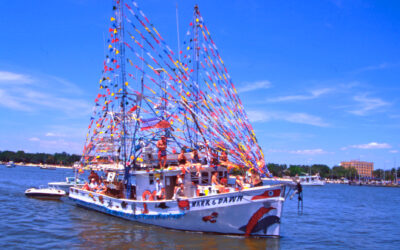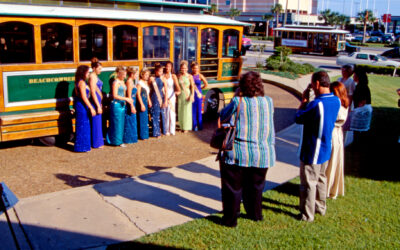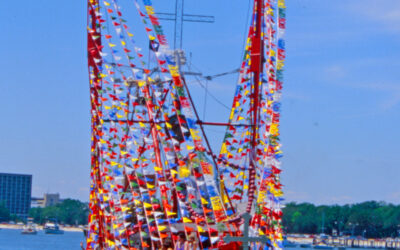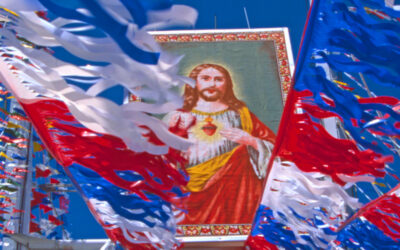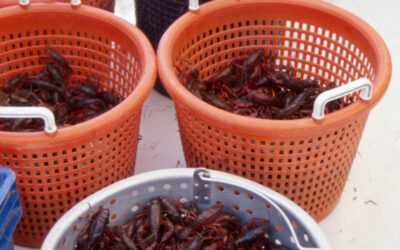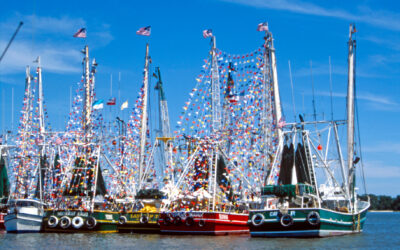The seafood industry helped to establish Biloxi. While the area was first settled by the French in the early 18th century, Biloxi was primarily a quiet resort community until the late 1800s when several local businessmen opened seafood canning plants. The industry developed during this time due to the establishment of a railroad link to the inland markets and the introduction of ice manufacturing and modern canning processes. The growth of the seafood canning industry brought thousands of immigrant workers to the area, including Croatians and Slavonians from Yugoslavia and Cajuns from southwestern Louisiana. While initially working in the canning plants, many of these immigrants eventually bought their own boats and began harvesting shrimp and oysters from the Mississippi Sound themselves.
This work experience has been repeated by the Vietnamese immigrants who have come to Biloxi in recent years. Many moved into the area during the early 1980s to take jobs at the seafood processing plants. Now many of them own their own shrimp boats and they make up the majority of active shrimp fishermen.
The Blessing of the Fleet ceremony came out of these groups’ strong ties to their Catholic faith. The tradition marks the beginning of the fishing season for shrimp fishermen. The blessing given by a local priest invokes a safe and prosperous fishing season for each boat in the procession.
The tradition can be traced back to ancient times in Europe, but Biloxi’s first Blessing ceremony took place in 1929. George Higginbotham, a longtime Biloxi resident described the first ceremony to a local newspaper reporter in 1998. Sunday Mass was conducted by the parish priest from an altar constructed on the shore of Biloxi’s Bay. The fishermen tied their decorated boats together in the bay and the priest stepped from deck to deck, blessing the boats.
The current ceremony is larger and more mobile. The shrimp boats form a procession out in the Mississippi Sound and file past the anchored “Blessing Boat” where the officiating priest stands, sprinkling holy water on the boats and giving the blessing for each one.
Over the years the Blessing of the Fleet has grown to include additional events, including the Shrimp Festival. The festival takes place the evening before the Blessing and features a dinner of various shrimp dishes, dancing, and the coronation of a Shrimp King and Queen who reign over the Festival and Blessing. Begun in 1948, the Shrimp Queen is determined by a pageant contest. Young women in high school who have familial ties to the seafood industry are eligible to compete. The winner receives prize money to be used for college expenses.
Reigning alongside her is the Shrimp King, who is chosen beforehand. The King is an older man who has many years of experience in the seafood industry. The King and Queen are crowned at the Shrimp Festival and join the priest conducting the Blessing of the Fleet in the stationary “Blessing Boat.”
St. Michael’s Catholic Church has been the central sponsor of the Blessing ceremony through the years. It is the place of worship for many Biloxi fishermen (including the Vietnamese) and its architecture reflects the main occupation of the parishioners. The church building is round with a scalloped shaped roof that resembles a huge clamshell. Featured on the stained-glass windows in the church are Christ’s twelve Apostles, who are shown as fishermen. St. Michael’s pastor, Reverend Patrick O’Shaughnessy, plays a central role in the organization of the Blessing and Shrimp Festival each year.
The 70th annual Blessing of the Fleet took place on Sunday, May 2, 1999. However, the festivities began on the day before with Great Biloxi Schooner Race. The Glenn L. Swetman and the Mikey Sekul, two sail-equipped Biloxi Schooners that are owned by the Biloxi Maritime and Seafood Industry Museum, raced in the Mississippi Sound. This contest is a tribute to the schooner races that were held during the off-season (for shrimping) until the early 1930s.
The race was followed by a cook-off at the Biloxi Community Center. Chefs from the different Biloxi casinos competed in preparing the best shrimp dish. All of the entries were served at the dinner that evening. Prior to the dinner, a special Blessing Mass was held at St. Michael’s Church. Contestants in the Shrimp Queen contest attended, escorted by members of the local Knights of Columbus chapter who were dressed up in their full regalia. Bishop Joseph Howze, Bishop of the Biloxi Diocese was the celebrant of the Mass. Howze and the were dressed in vestments which featured symbols associated with the seafood industry.
Immediately after the Mass, the congregation proceeded to the community center where the Shrimp Festival was held. The Shrimp Queen contest was held before dinner. Judges for the contest included local casino executives and a candidate for Lieutenant Governor. After a winner was chosen, the shrimp dinner proposed by casino chefs was served, followed by dancing.
Shrimp boats and other watercraft began gathering in the Mississippi Sound for the Blessing of the Fleet late the following morning. Many of the boats were colorfully decorated with the strands of triangular flags and plastic fringe, similar to the types you would find decorating a car sales lot. Full-size flags were also widespread, including American flags, Mississippi State flags, and Confederate battle flags. Religious items were also displayed. The owners of the “Blessing Boat,” Lady of The Sea, attached a large portrait of Jesus to the top of the pilothouse. Some of the boats had brightly painted cardboard cutouts of shrimp and other sea life attached to their cabins and hulls. Others displayed custom-made signs which echoed the blessing of the priest (one read “Bless this fleet Lord and guide them with your love and light.”) or the age of the boat (one read “Built in 1929 and still shrimping in 1999”).
The Blessing ceremony began at 1:00 p.m. with the dropping of the wreath. Each year an evergreen wreath is dropped into the Sound in remembrance of the fishermen who have been lost at sea. This year the wreath was dropped from a local television station’s helicopter nearby the “Blessing Boat” where the officiating priest, Bishop Joseph Howze (Bishop of the Biloxi Diocese) was stationed. Howze led a short prayer that remembered the fishermen who had lost their lives and then the blessing procession began.
The boats participating in the blessing were positioned farther out in the Sound. They proceeded in a single line, filing past the “Blessing Boat” (Shrimp trawler Lady of the Sea) and received their blessing from Bishop Howze. Howze sprinkled each boat with holy water as it passed and gave a short blessing. More than 30 shrimp boats received a blessing, along with a number of other pleasure craft.
Like any other community celebration, abundant food and drink played an important part in the Blessing of the Fleet. Guests aboard Lady of the Sea were treated to a lunch of fried spring rolls, shish kabobs, and boiled crawfish provided by the owners of the boat.
The Blessing of the Fleet has received steady media coverage through the years, including in an article on the Gulf South published in National Geographic in 1982. This year’s Blessing received international coverage. A production crew from the German national television network Channel 1 (Erstes Programm) documented the entire event. The German visitors were also introduced and instructed on the art of eating crawfish while they were on board the blessing boat filming the ceremony.
Despite the changes in the seafood industry in Biloxi and the recent rise of the casino business in the area, the Blessing of the Fleet remains an important community celebration and tradition. Most longtime Biloxi natives have deep ties to the seafood industry. While they may no longer work in the business, the Blessing gives the participants a chance to celebrate the industry that brought their ancestors to the Mississippi Gulf Coast.

